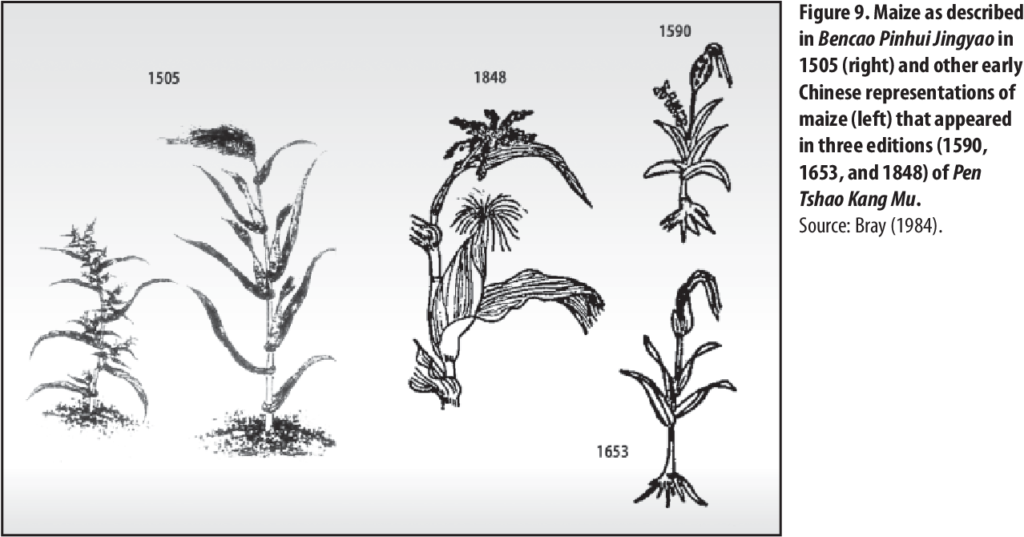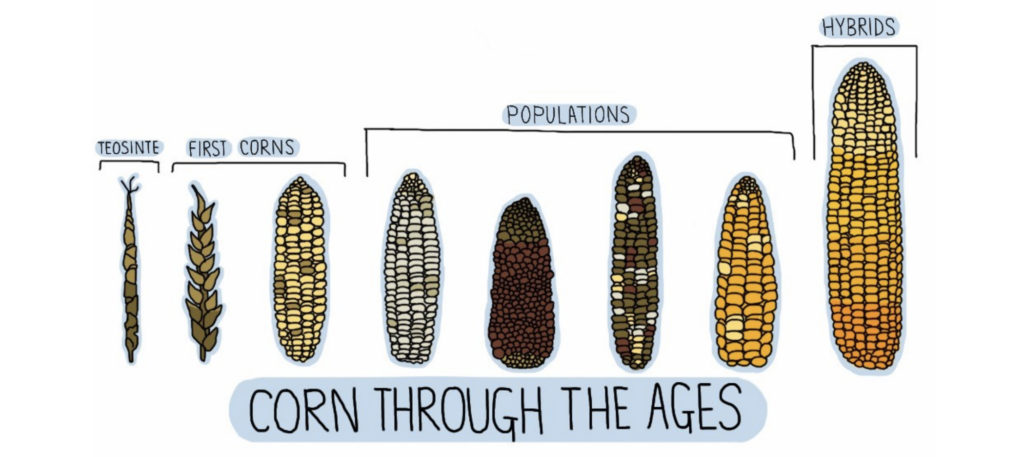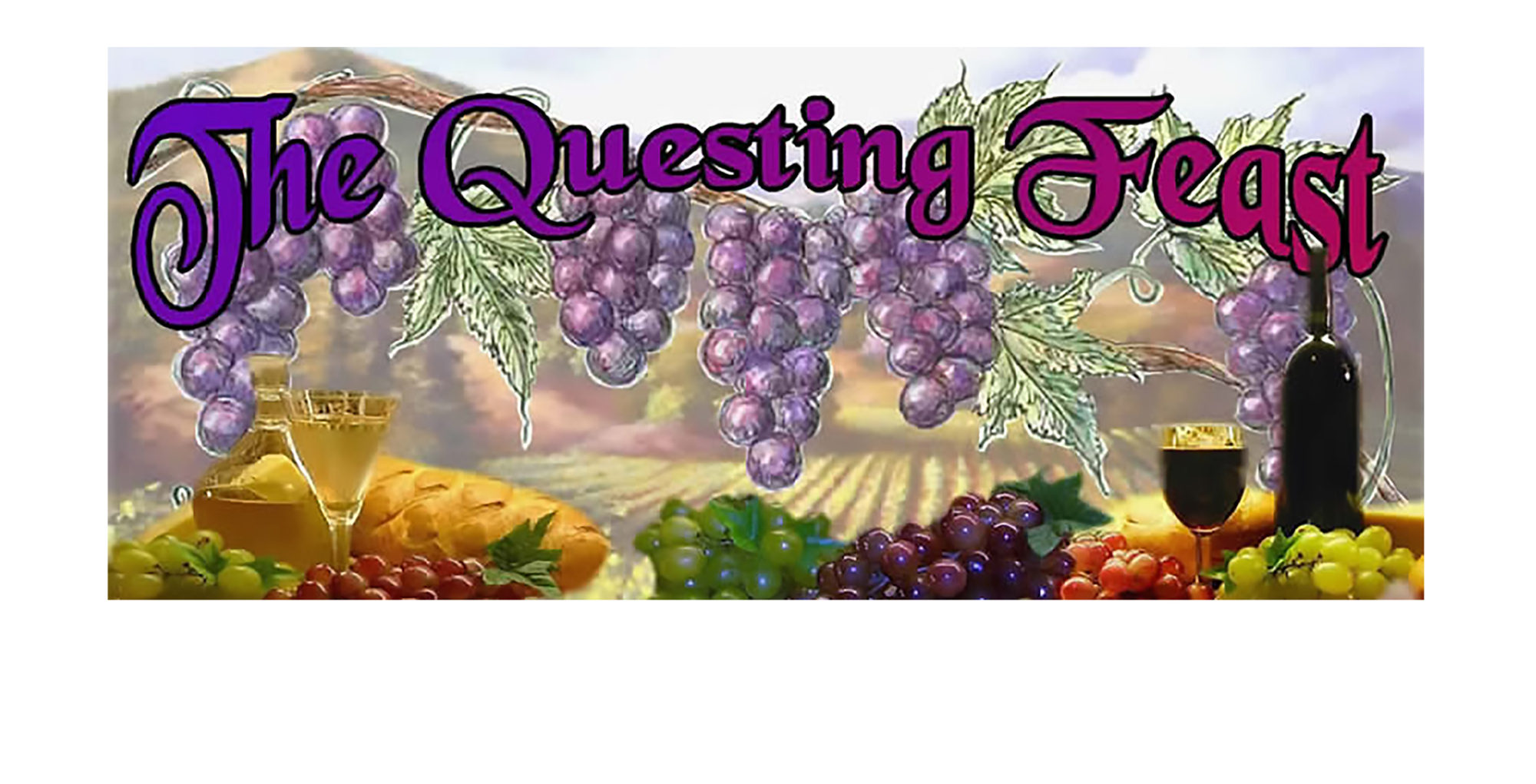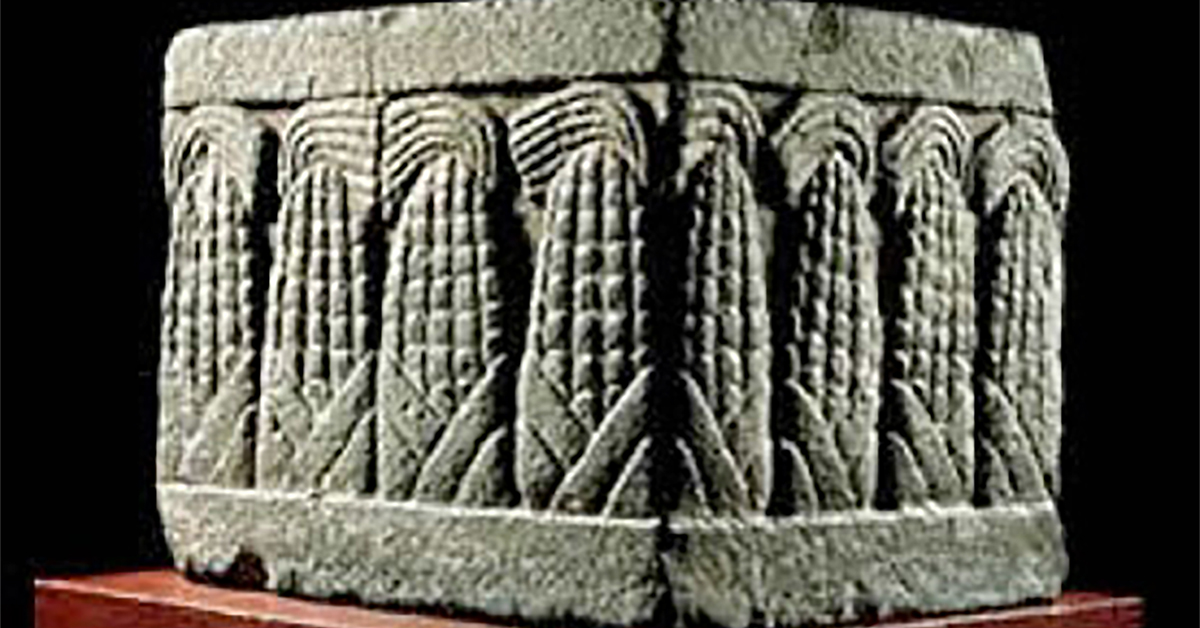by Dana Leilehua Yuen
When we read old European stories, fairytales, and fables and “corn” is mentioned, it’s probably not the American maize the teller was meaning. In Old English, “corn” was the seed of any cereal plant, usually the one grown in the area of which one was speaking.
The word comes from the Proto-Germanic kurnam, “small seed, ” which also is the source of the Old Frisian and Old Saxon korn “grain,” Middle Dutch coren, German Korn, Old Norse korn, Gothic kaurn, all ultimately from the root *gre-no (grain). The Old English word referred to “grain with the seed still in” (as in barleycorn) rather than a particular plant. The American maize was called “Indian corn” around the 1600s, and eventually American English dropped the adjective.

Franz Eugen Köhler, Köhler’s Medizinal-Pflanzen , Wikipedia
The story of maize cultivation begins some 9,000 years ago in Mexico. The large yellow ears so common today did not exist then, but a wild grass called teosinte did. The ears of teosinte are the size of a child’s finger, each one bearing a few hard kernels. But those kernels can be eaten. And the people of that time learned to cultivate them and select for desired characteristics.
As people migrated across the Americas they took teosinte and its descendants with them to eat and to cultivate. By 5100 BCE maize was cultivated as far north as Tabasco. Fossilized pollen evidence shows forest clearing around 5100 BCE along the banks of the Grijalva River delta for the purpose of growing maize.
Maize was included in the items Christopher Columbus took back to Europe and was cultivated there. Other Europeans who arrived later sent other varieties home which also were cultivated. Soon maize was a product of trade and spread throughout the world.
For those wondering why there are so many traditional Chinese dishes which use this American grain, maize was introduced to China by 1500, thriving where rice did not grow well, and contributing to the 18th century population boom.


Many varieties of maize are now grown throughout the world, and it is an important crop in international trade. One of the cutest spokespersons is South Dakota’s “cornbassador,” Tariq.


